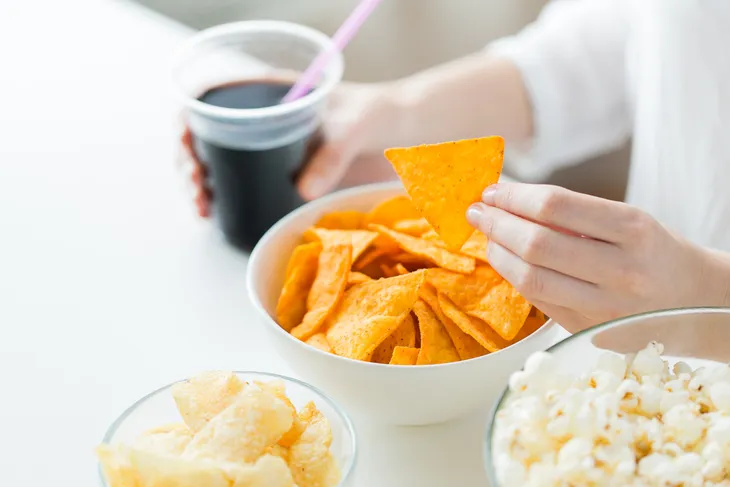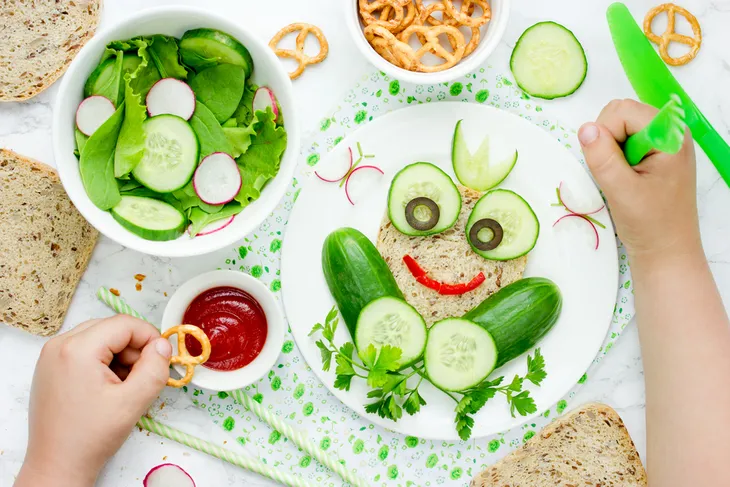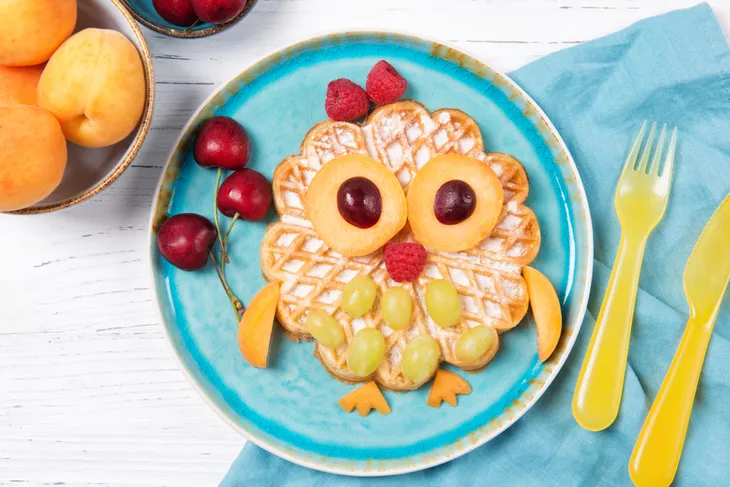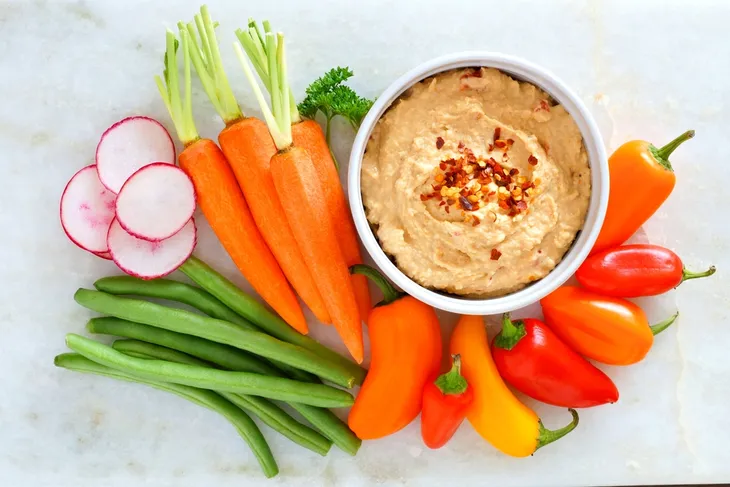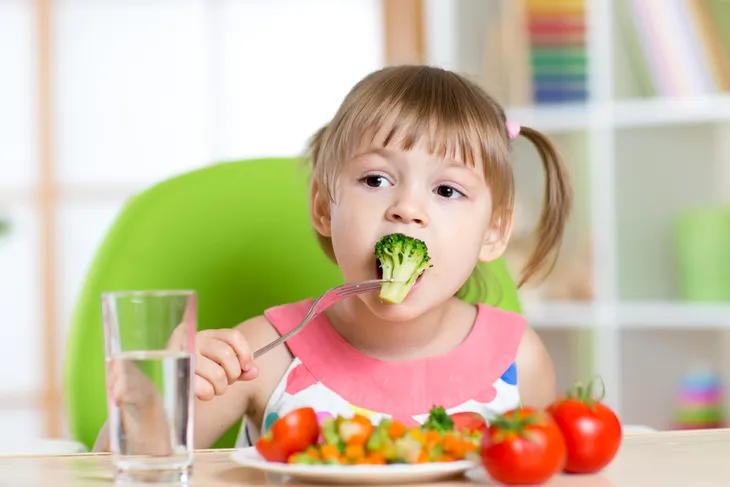Children can be notoriously picky eaters. Getting them to eat nutritious foods can be challenging. They need a well-balanced diet to grow and develop into healthy adults. As a parent there are several things that you can do to promote healthy eating habits in your children.
Following these simple tips can make a positive difference in the growth and development of your children, forming good habits that can last a lifetime. Let’s take a closer look at how to get your kids to eat better…
Create Food Plans and Schedule Dinners
Children need to eat every 3 hours or so. This helps keep their blood sugar levels stable and keeps them from getting famished and grumpy. They should have 3 meals and 2 snack breaks plus drinks per day. Keeping a few water bottles, pretzels, or apples with you in the car can help prevent those unscheduled trips to fast food stores for a snack.
Likewise, taking a few moments to plan dinners ahead of time will prevent you from scrambling at the last minute to throw something together. Keep it simple, but be sure to make meals balanced and include a vegetable or fruit, protein (i.e., meat, fish, eggs, cheese or beans) and whole grain bread, pasta, or rice.
Don’t Police Your Child’s Eating
Once you’ve done your job as a parent by giving your children healthy and nutritious meals, there’s no reason to take a hard line regarding how much they eat.
Nagging them to finish everything on their plate or eat all of their vegetables will only serve to make mealtimes a chore and invite further resistance. Be neutral and allow them the freedom to determine how much they eat. By allowing them to determine how much they eat you allow them to continue to understand what hunger cues are.
Limit Junk Foods in Your Home
Many parents rely on quick and convenient junk foods such as pizza for dinner or fillers like bear paws for school snacks. Limiting the amount of these types of foods in your home will encourage your children to eat more fruits, vegetables and dairy products.
Junk food is harmless once in a while, but on a daily basis it can pack on the pounds, increase sodium intake, and contribute to lifelong poor eating choices.
Make Food Fun
Kids love to play. So anytime you can make meals fun, you’re not only making beautiful memories, but seizing an opportunity to teach good eating habits too. Try making Mickey Mouse pancakes by drizzling pancake batter to create ears attached to the main body of your round pancake when it’s cooking. Arranging foods in creative ways on plates by using a cookie cutter to cut bread into various shapes or calling broccoli “trees” or “bushes” can make food fun.
Another game kids love is when you put a bite of food on their fork and pretend you are the food then tell them not to eat you. Once they eat the food, put another piece on their fork and tell them to give your brother, sister, aunt, uncle back and not to eat you. Fun makes meal times a great experience.
Model Good Eating Habits
Children are like sponges, absorbing everything they see and hear. This is why it’s so important to model good eating behavior yourself. If you are constantly dieting, skipping meals, snacking on candy, or giving in to emotional eating then your children will grow up thinking this is normal. They will ultimately copy you.
Pay attention to the food messages you are sending. Is your eating erratic? Do you eat only when you are hungry and stop when you’re full? Do you make good food choices or are you a junk food junkie? Remember, your kids are watching so be careful to practice what you preach when it comes to healthy eating.
Treats in Moderation
If you forbid junk food or sugary treats completely this only serves to make them even more appealing. Once your children are at school or with friends they will be exposed to these foods. The trick is to limit the amount of processed junk foods.
An occasional sweet treat, candy, cookie, or soda won’t destroy the healthy eating habits you’ve worked so hard to develop. The trick is to limit these to occasional times and not allow them to become part of their regular, daily food intake.
Let Your Children Help with Cooking
Children love to learn and enjoy helping. Having them participate in cooking is a great way to reinforce good eating habits and choices. They’ll be much more interested in eating if they’ve helped prepare the meal themselves.
You can start by letting them choose a meal they want to try then go to the grocery store and let them pick out the fruits or vegetables for the recipe. Even small children can help with things like breaking off the ends of green beans and then tossing them in a pot. Making muffins and cookies is also something kids love to do.
Make Breakfast Even Better
Breakfast is the perfect meal to sneak in extra fibre. You can make whole grain pancake batter in advance and store it in your freezer until you’re ready to use it. High fibre cereals such as cheerios or raisin bran are also a quick and easy way to add nutrition to your morning meal.
Fresh or frozen fruit make a great topping for cereal or breakfast smoothies. You can also try sprinkling seeds or nuts on top of cereal and oats for a crunchy texture.
Soy is Your Friend
Soy contains many good nutrients called phytochemicals. Unfortunately, not all children like the taste. Although some children don’t like plain soy milk they may drink chocolate flavored soy milk.
Or if that fails you can hide soy milk by using it in cooking recipes such as muffins, mashed potatoes, sauces and oatmeal. This way your children can still benefit from the nutritional punch in soy milk without the battle to get them to drink it.
Use Dips
If your children don’t like raw vegetables or certain meats, try dipping them. Carrot sticks, celery, broccoli, cauliflower, or snow peas dipped in ranch dip or hummus can be very appealing to children.
Cooked chicken or pork chop pieces dipped in plum sauce, salsa, or apple sauce are also a favorite for kids. Something as simple as dipping sauce can be the difference between a struggle at meal time or a happy child dipping and eating their vegetables and meat.
Strategies for Introducing New Foods
New foods should be introduced slowly over time. The one bite rule is effective for helping encourage children to at least try a new food. Often if they have one bite of a new food, they discover it’s not so bad and will try more.
Kids’ taste buds sometimes need time to adjust to new foods. Another strategy that can work is hero worship. If they have a favorite sports hero who likes a particular food, reminding them about this can encourage them to try a new food. After all, it was spinach that helped build Popeye’s strong muscles!



